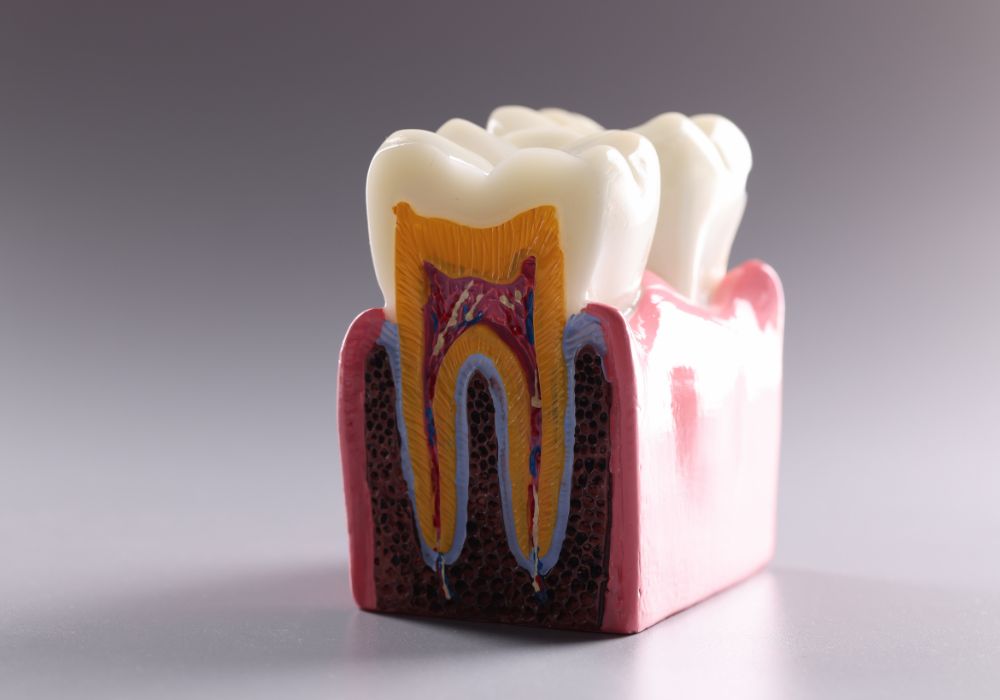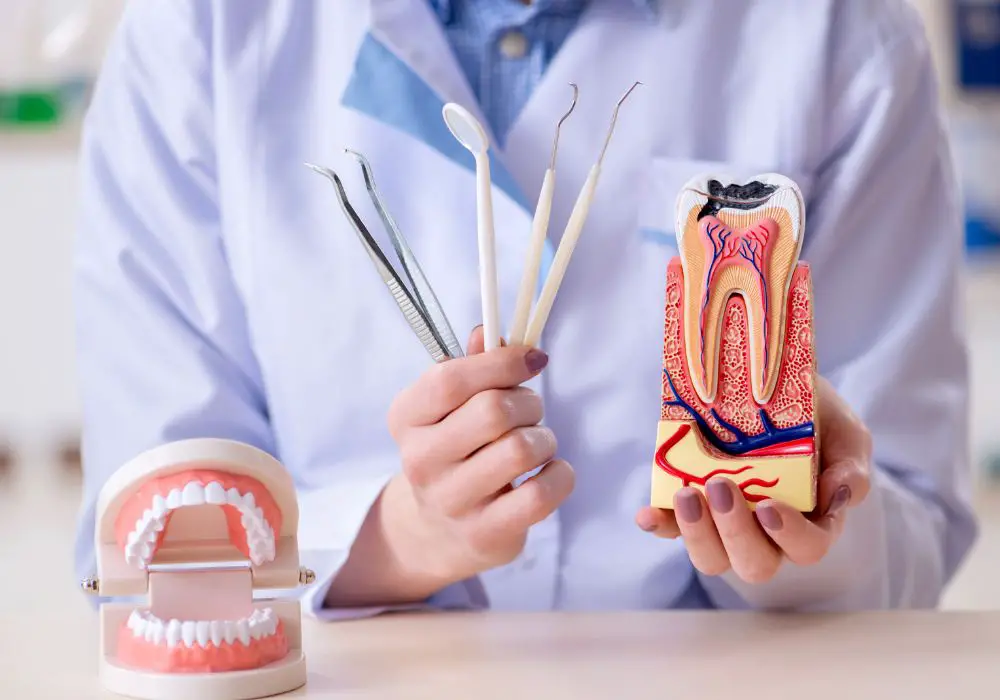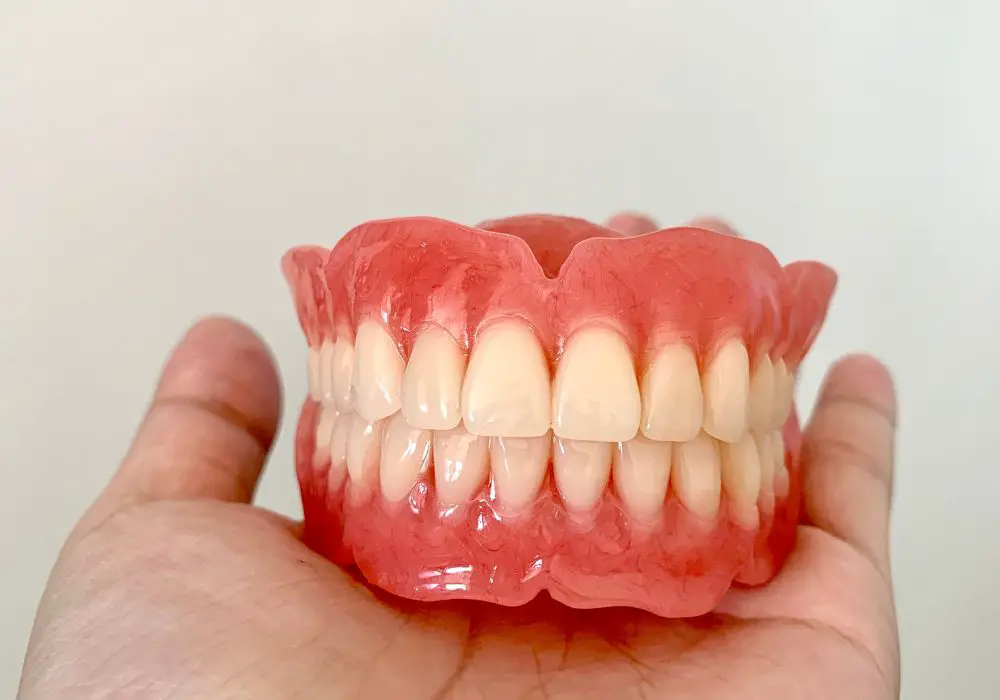The nerves in our teeth serve an important purpose – they allow us to feel hot, cold, pain, and pressure. So what happens if a tooth loses its nerve? Can a tooth still survive and function without it? In this article, we’ll explore whether teeth can live without nerves, look at why nerves die in the first place, and discuss treatment options for non-vital teeth.
Do Teeth Need Nerves to Survive?

Teeth can survive without nerves, but they become far more prone to infection and eventual extraction.
The nerve ( pulp) of the tooth contains blood vessels, lymph vessels, and nerves that enter the tooth through the root canal. The nerve provides the tooth with sensation and nourishment needed to stay alive.
When the nerve dies, the tooth loses its main supply route for nutrients and becomes unable to feel pain or temperature changes. A tooth without a nerve becomes “non-vital.”
While a non-vital tooth can remain in the mouth for years, it is more susceptible to bacteria, infection, and fracture. A dead tooth essentially becomes a “time-bomb” in the mouth – alive for now, but prone to cause serious problems down the road.
What Causes Tooth Nerves to Die?
There are several potential causes of pulp death:
Decay
Dental decay that reaches deep into the tooth can expose and infect the pulp. Bacteria release toxins that inflame and eventually overwhelm the nerve.
Injury
Trauma to a tooth, such as a crack, chip or knock, can sever blood supply to the nerve or allow bacteria to invade directly into the pulp chamber.
Restorations
Extensive fillings and crowns that are too deep can put pressure on the underlying pulp and cause inflammation and death.
Grinding
People who grind or clench their teeth excessively can cause tiny cracks in their teeth that irritate the pulp over time.
Aging
As we age, the pulp inside our teeth tends to calcify and become less vital and less resilient to trauma or decay.
Signs of a Dead Tooth Nerve
How do you know if the nerve in your tooth has died? Here are some common signs:
- No pain! The tooth will not hurt at all, even with hot/cold drinks or sweet foods.
- Discoloration – the tooth may turn grey, yellow, or brown.
- An abscess (pocket of pus) on the gums near the tooth.
- Swelling or “ballooning” of gum around the tooth.
- A sinus tract – a narrow canal of drainage from the infected tooth.
- A foul taste from the dead tooth and tissue metabolites.
If you notice any of these issues, it’s important to see a dentist right away. An infected non-vital tooth will not get better on its own.
Consequences of Losing a Tooth Nerve

While a dead tooth can remain functional for some time, problems often arise down the road. Common consequences include:
- Infection – Bacteria will eventually find their way into the tooth through tiny cracks and leaky fillings, leading to an abscess.
- Pain – While the tooth itself is numb, the infection can cause severe pain as pressure builds up inside the tooth and root.
- Tooth Loss – An infected tooth that is not treated properly may have to be extracted to prevent the spread of bacteria.
- Systemic Issues – Dangerous infections from a dead tooth can spread through the bloodstream, potentially causing sepsis, heart disease, and other serious issues.
Treatment Options for Non-Vital Teeth
If caught early, a non-vital tooth can often be salvaged and restored to full function. Common treatment options include:
Root Canal Treatment
This procedure removes the infected or dead pulp, thoroughly cleans the interior of the tooth and roots, and seals the space. This eliminates the source of infection and pain. The tooth is then restored with a filling or a crown.
Root Canal Surgery
If a tooth’s canals are inaccessible or highly curved, apical surgery may be required. The tip of the root is accessed surgically and the canal is sealed. The rest of the tooth can then be saved with a root canal treatment.
Tooth Extraction
If the tooth is too damaged or infected to save, extraction is the only option. With a skilled dentist, extraction should be quick and relatively painless. The gap can be restored with a dental implant or bridge.
No Treatment
If the tooth is non-vital but not infected, the dentist may recommend just monitoring it for any changes. This avoids unnecessary treatment but does risk emergent infection.
Here is a table summarizing the key treatment options:
| Treatment | Description | Success Rate |
|---|---|---|
| Root Canal Treatment | Remove infected pulp, disinfect and seal the tooth | 85-90% long-term success rate |
| Root Canal Surgery | Access the root tip surgically to perform root canal treatment | Varies depending on root shape and location |
| Tooth Extraction | Complete removal of the tooth | Definitive treatment, space requires restoration |
| No Treatment | Monitor a non-vital but non-infected tooth | Risk of future infection |
Maintaining Teeth Without Nerves

If endodontic treatment saves a non-vital tooth, good daily care is key to ensuring its long-term survival. It’s critical to:
- Brush twice daily and floss thoroughly to prevent decay in the restored tooth.
- Have regular dental cleanings every 6 months.
- Avoid chewing extremely hard foods like ice or hard candies that could crack the tooth.
- Wear a custom night guard if you grind your teeth.
- Check for any cracks or changes and report them to your dentist.
- Get the tooth restored with a crown or filling to prevent fractures.
With excellent oral hygiene and avoidance of trauma, an endodontically-treated tooth can survive for many decades and provide normal function.
Frequently Asked Questions
Can you feel pain in a dead tooth?
No, a dead tooth does not cause any pain since the nerve tissue is necrotic. However, you may feel intense pain from the area around the tooth if a severe infection develops in the tooth and spreads to the bone and gums.
Do dead teeth turn black?
Discoloration is very common in a non-vital tooth. It may turn grey, yellow, or brown since it is no longer getting blood flow. However, a tooth only turns black if it necroses and decays significantly before falling out.
Is a root canal absolutely necessary if the tooth doesn’t hurt?
Not always. If the tooth nerve is dead but there is no infection present, your dentist may recommend just monitoring the tooth periodically instead of doing an unnecessary root canal. However, a root canal is generally advised to prevent future infection.
Can you reverse pulp necrosis?
Unfortunately no, once the tooth pulp tissue dies it cannot be regenerated or brought back to life. The only option is to have the necrotic pulp removed through a root canal. However, sealing and restoring the tooth can allow it to function normally.
How long can you leave a dead tooth in your mouth?
This depends on the presence or absence of infection. A non-vital but stable tooth could potentially remain in the mouth for life. However, if there is an untreated infection, the tooth needs to be extracted quickly before the infection spreads.
Conclusions
While a vital nerve is critical for long-term dental health, teeth can continue to function for years after their nerves die. However, non-vital teeth are at much higher risk for serious infections, pain, fractures, and eventual tooth loss if not treated properly.
By seeing a dentist right away for signs of pulp death, undergoing root canal treatment or extraction, and taking good daily care of the restored tooth, you can maintain a healthy, comfortable, and functional smile for life.







